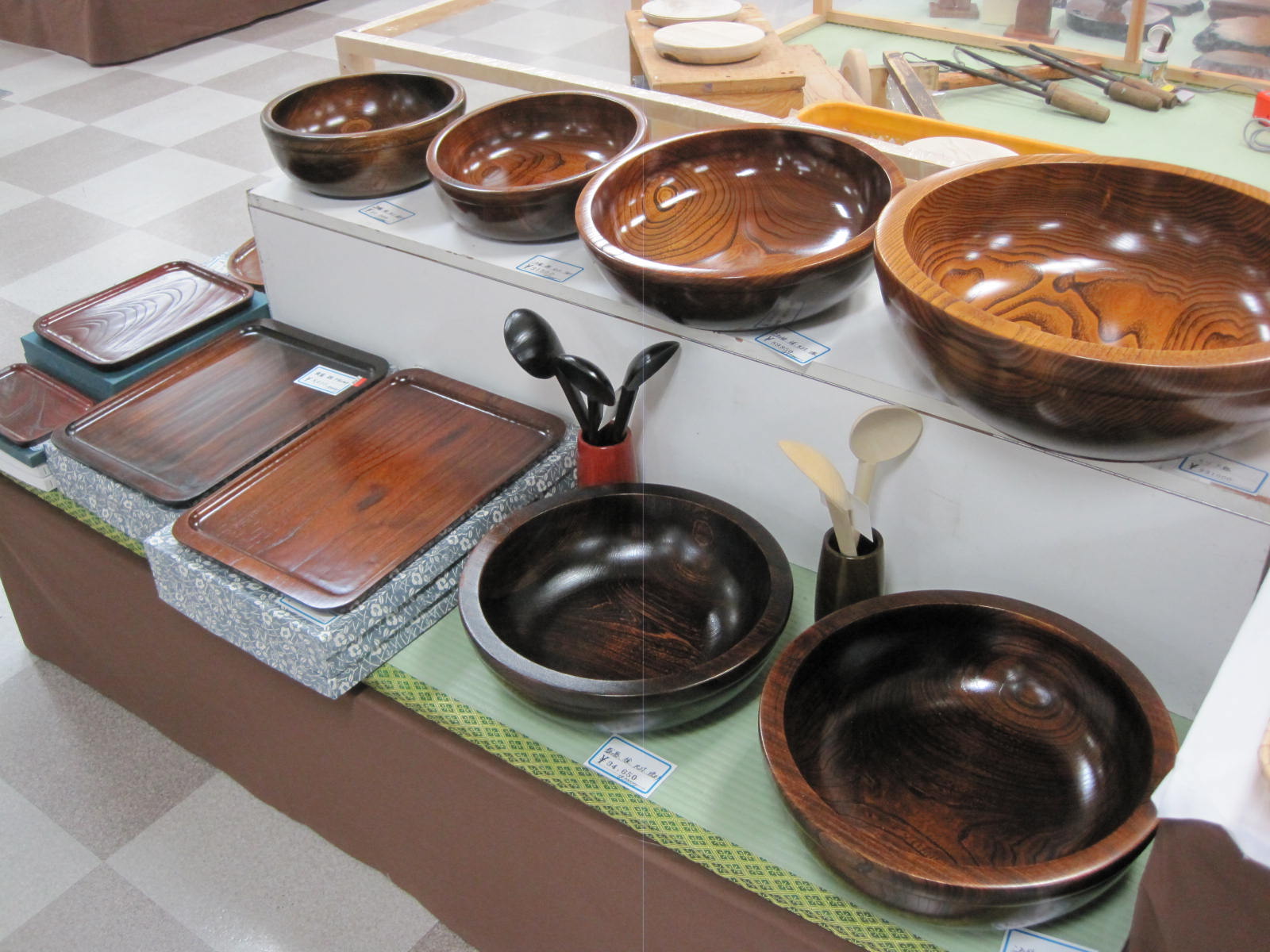Nagiso Awara Workmaker~南木曽ろくろ細工
History
According to the old documents of Nagiso-town, the beginning of Nagiso turnery is the early 18th century. It is written down that I opened the bare wood baggage such as a tray, the wooden bowl in Nagoya, the Osaka area. In the middle of Edo era, it is indicated that unvanished wooden turneries (it goes down a thing) were produced in this district. < br>
Production process
- Tama-kiri
- I cut a raw wood into round slices. The use wood keeps a horse chestnut, a zelkova, a stopper, beauty of the grain of wood including Betula grossa to produce in Kiso alive and uses it properly.
- Hiki-wari
- I call that I make a Kiguchi side the top and cut the raw wood which performed timber conversion to rough size "sawing".
- Maru-me
- Furthermore, I cut off the outside, and a circle can be regulated well.
- Ara-biki
- I saw it to thicker dimensions with a potter's wheel machine.
- Drying
- I am dried until the water of the tree becomes around 10%. When I am dried naturally for about one month when I am dried by electricity, I suffer with the big thing for three years from three months. Furthermore, I leave this naturally and return water to around 12%.
- Finish grinding
- I finish it with finish plane, Shaka plane (plane to remove the eyes muscle which I sawed, and to make the last facing) and do an aspect smoothly.
- Finish polish
- I polish up it with sandpaper by a potter's wheel machine.
- Equisetum hyemale polishing
- While the unvarnished wood product soaks water; "Equisetum hyemale" "come immediately, and polish it with straw".
- wipe it with lacquer
- I wipe lacquer and polish the product while stenciing 3-6 times of unrefined varnish.
Work
2017/05/02
